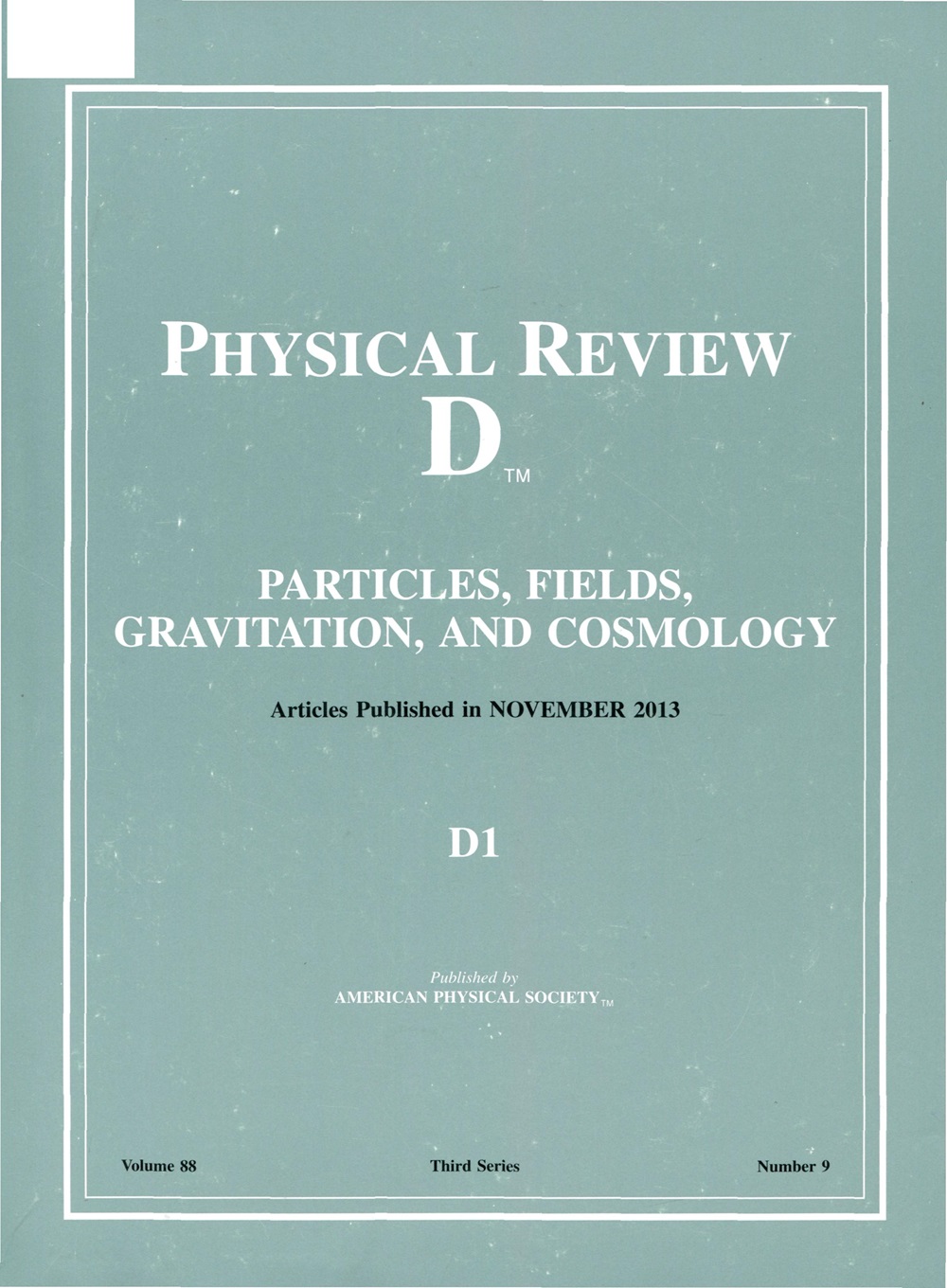用天照事件限制超高能宇宙射线的超重暗物质起源
IF 5
2区 物理与天体物理
Q1 Physics and Astronomy
引用次数: 0
摘要
天照照,第二大能量(244 EeV)宇宙射线粒子最近被望远镜阵列(TA)表面探测器探测到。天照照事件的起源令人费解,因为它的到达方向指向当地宇宙的一个空洞,缺乏传统的天体物理学超高能量(UHE)宇宙射线源。因此,我们探讨了这个TA天照事件是否可能起源于银河系中超重暗物质(SHDM)的衰变。这样的起源也在UHE伽马射线和UHE中微子中打开了多信使探测通道。在目前的工作中,我们利用TA天照事件和各种UHE望远镜的多信使限制/灵敏度,对SHDM的寿命和质量进行了严格的限制。我们发现在皮埃尔·奥格天文台(PAO)和TA未探测到相应的伽马射线与解释TA天照事件所需的SHDM参数空间存在严重的张力。此外,我们将多信使分析扩展到未来的UHE伽玛射线和UHE中微子望远镜,如PAO升级,GRAND 200k和IceCube-Gen2。我们发现,未来中微子望远镜的边界将能够与目前的UHECR边界竞争。然而,与现有的UHE伽玛射线边界相比,未来的PAO升级和GRAND 200k伽玛射线探测器将使SHDM寿命的边界至少提高一个数量级。2025年由美国物理学会出版本文章由计算机程序翻译,如有差异,请以英文原文为准。
Constraining the superheavy dark matter origin of ultrahigh-energy cosmic rays with the Amaterasu event
Amaterasu, the second most energetic (244 EeV) cosmic ray particle has been recently detected by the Telescope Array (TA) surface detector. The origin of the TA Amaterasu event is puzzling, as its arrival direction points back to a void in the local Universe, lacking conventional astrophysical ultrahigh-energy (UHE) cosmic ray sources. Hence, we explore the possibility if this TA Amaterasu event could have originated from the decay of superheavy dark matter (SHDM) in the Milky Way. Such an origin also opens up multimessenger detection channels in both UHE gamma rays and UHE neutrinos. In this present work, using the TA Amaterasu event and the multimessenger limits/sensitivities from various UHE telescopes, we place stringent constraints on the lifetime and mass of the SHDM. We find that the nondetection of the corresponding gamma rays at the Pierre Auger Observatory (PAO) and the TA is in severe tension with the SHDM parameter space required to explain the TA Amaterasu event. Additionally, we extend the multimessenger analysis to the future UHE gamma-ray and UHE neutrino telescopes such as PAO upgrade, GRAND 200k, and IceCube-Gen2. We find that the bounds from the future neutrino telescopes will be able to compete with the present UHECR bounds. However, compared to the existing UHE gamma-ray bounds, the future PAO upgrade and the GRAND 200k gamma-ray detectors will improve the bounds on SHDM lifetime by at least one order of magnitude. Published by the American Physical Society 2025
求助全文
通过发布文献求助,成功后即可免费获取论文全文。
去求助
来源期刊

Physical Review D
物理-天文与天体物理
CiteScore
9.20
自引率
36.00%
发文量
0
审稿时长
2 months
期刊介绍:
Physical Review D (PRD) is a leading journal in elementary particle physics, field theory, gravitation, and cosmology and is one of the top-cited journals in high-energy physics.
PRD covers experimental and theoretical results in all aspects of particle physics, field theory, gravitation and cosmology, including:
Particle physics experiments,
Electroweak interactions,
Strong interactions,
Lattice field theories, lattice QCD,
Beyond the standard model physics,
Phenomenological aspects of field theory, general methods,
Gravity, cosmology, cosmic rays,
Astrophysics and astroparticle physics,
General relativity,
Formal aspects of field theory, field theory in curved space,
String theory, quantum gravity, gauge/gravity duality.
 求助内容:
求助内容: 应助结果提醒方式:
应助结果提醒方式:


